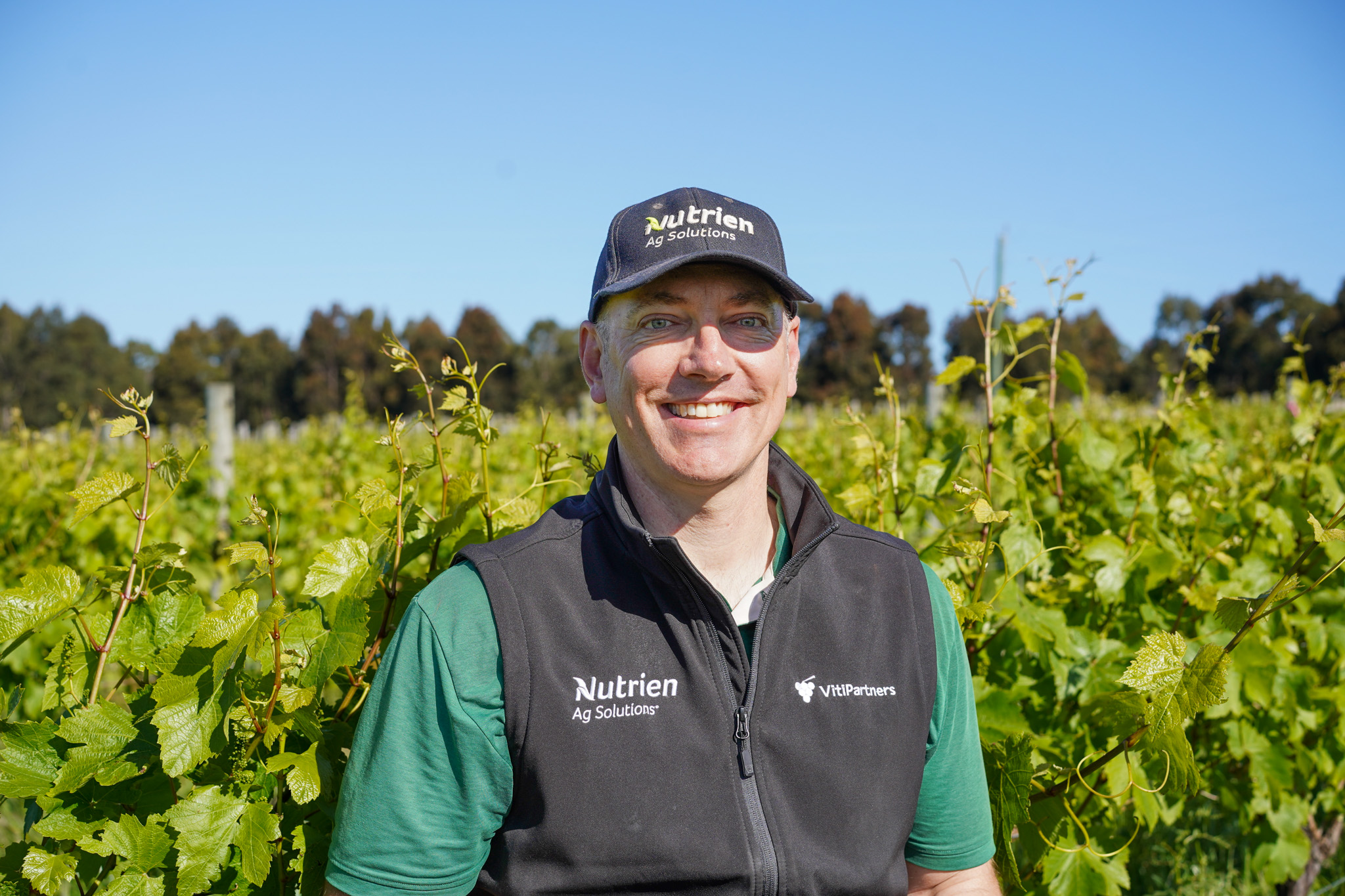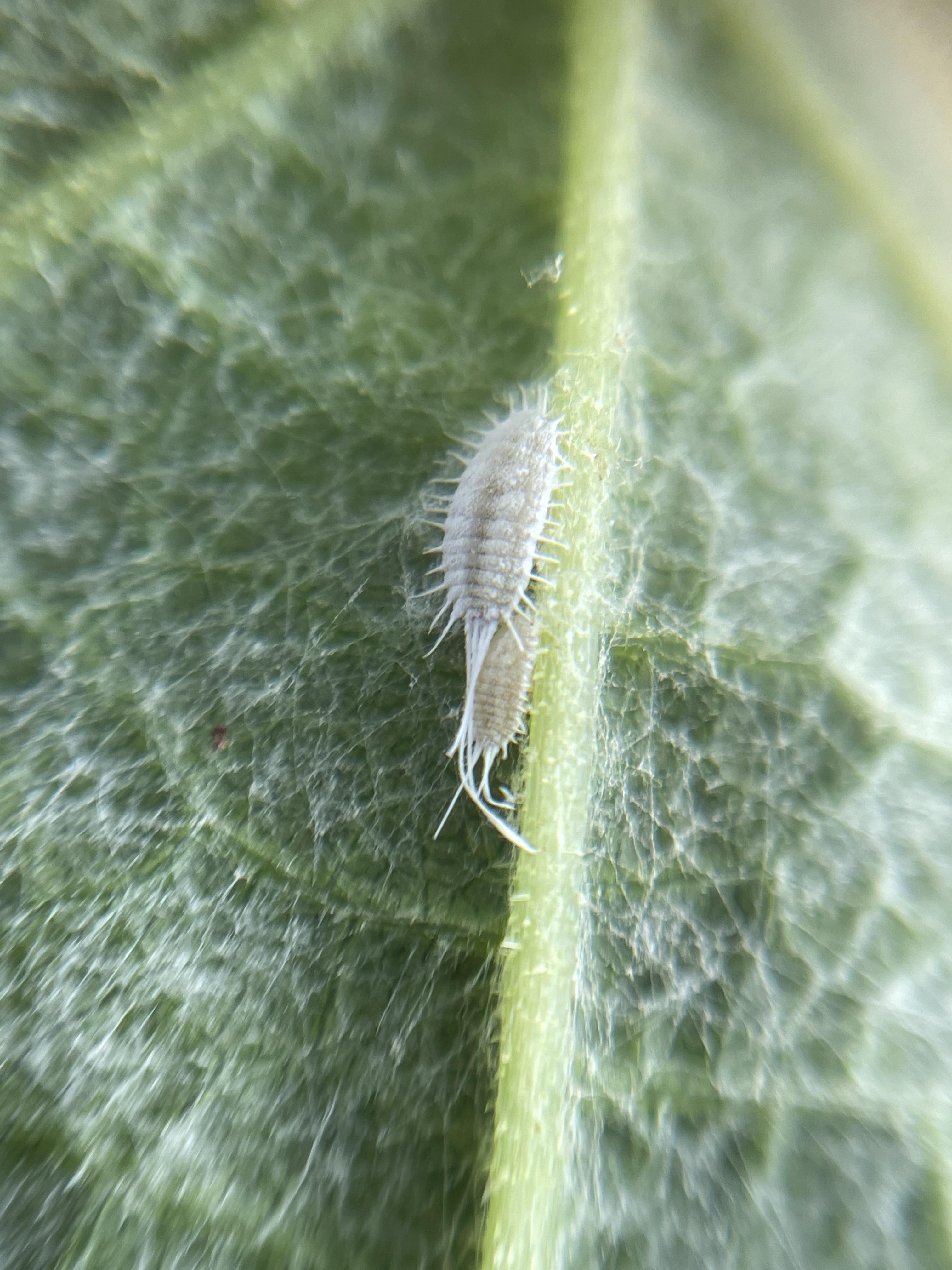
Mealybug trials prove fruitful for Nutrien Ag Solutions
With 25 years in R&D, the award-winning product development agronomist relishes the challenge of working with growers to better understand the complexities of managing pests and their interaction with plants, the environment, and chemical controls.
“We got to witness first-hand some of the well-documented behaviours and traits of mealybug populations, like how they’re influenced by humidity, temperature, sensitivity to the crop, ant populations and the release of predatory insects. That’s a lot of variables that can dictate the population of one little pest insect!” Scott said.

“Product development happens quickly in today’s market. We often see new products released to growers with sound use labels but a limited amount of information on how to practically incorporate them into grower programs. We work closely with suppliers and grower groups to allow for independent evaluation and seamless integration of new solutions.”
Awards lead to new research
In 2023 Scott was selected as a regional winner of Syngenta Australia’s Productivity Growth Awards for his work liaising with research bodies and growers to develop pest control strategies that maximise yields and profit.
The same year, the Australian Wine Industry Supplier Association presented Scott with the Impact Award for his work on botrytis control, where he took a ‘warts and all’ approach to reviewing disease, chemistry and biological versus traditional controls.
Scott has undertaken research over the last few seasons on longtailed mealybug, a significant pest in table and wine grapes and other horticultural crops across Australia.
The new research aimed to improve understanding of the pest’s life cycle and evaluate new chemistry, to see how it fits into potential control programs.
With multiple generations occurring in a growing season, mealybug can give rise to crop losses through development of sooty mould linked to their feeding behaviour on fruit. Because the pest emerges as a problem at the fruit stage, most growers try to address it late in the growing cycle, which Scott said is not ideal.
“The temptation for growers is to control the problem as close to appearance as possible,” he said.
“While logical on the surface, this focus often leads to use of insecticide strategies based on residue withholding periods rather than timing the use of chemistry against critical phases of lifecycle development where they deliver maximum efficacy.
“Our chemistry options are not all active on all development growth stages in the life cycle. Not understanding how the chemistry works can lead to use of an insecticide when a solid amount of the population is not being controlled.
“Our aim is to provide the information growers need to simplify their insecticide programs for control of this pest. We don’t want undue pressure placed on the chemistry, that’s how we cultivate resistance issues through the industry. We also don’t want growers overspending on unnecessary sprays when a more targeted approach provides better outcomes. Neither of these situations are sustainable.”
Project maps impacts of natural predators and insecticides
With the help of two Margaret River wine grape growers, Nutrien Ag Solutions set up research trials in smaller plots at scientific scale, to track the impact of new and existing insecticides and how they interact at various stages of the mealybug’s life cycle, over Summer.
The trials included the release of natural predators and mapping their impact on mealybug numbers, as well as assessing the use of insecticides alongside predators such as brown lacewings as an integrated option for overall population control.
The results were extremely valuable.
“We found out a lot about the insecticides. New chemistry options could be extremely selective in their effectiveness at key points during the juvenile lifecycle stages. They also differed markedly from existing insecticide standards in the timeframes needed for maximum effects,” Scott said.
“We also observed a classic example of the symbiotic relationship between black ants and mealybugs. Ants feed on the excess sugars released by mealybugs which often results in sooty mould on the fruit. It was fascinating to watch the aggressive defence of adult and juvenile mealy bug stages by black ants within the trials. This contributed dramatically to population growth during the summer.
“The predatory interactions were fascinating to observe. We could see the regeneration of mealybug at the end of the season once the predators had moved on to zones with a higher population of the pest.”

Scott acknowledges that growers don’t have time to look at pest populations or control options to these levels. Having research data available for Nutrien Ag Solutions staff allows the team to adopt evidence-based strategies to address grower issues.
“We are essentially doing all the ground truthing of new chemistry options before deploying them in the field with growers,” he said.
Aim is for population interference, rather than knockdown control
Scott described a fundamental difference in philosophy that can be resolved by the new integrated data sets.
“With the chemistry we are working with these days, we are aiming for maximum population interference across generations over complete population knockdown from a single spray. Our research shows the need for sequential strategies when targeting multigenerational pests like mealybug.”
The next step is to communicate the outcomes to suppliers, agronomists, and growers.
“We like to undertake in-house training of our agronomy teams so we can deep dive into the data sets and distil the complicated concepts down to simpler broad concepts for practical use in the paddock,” he said.
“The information will be used to guide grower program discussions as one on one sessions or broader grower group engagement events over the year. These sessions will cover all the work we have undertaken on pest and disease management.
“I enjoy working with technical divisions within multiple supplier companies. My role with Nutrien gives me the opportunity to communicate with them throughout the year, exchange ideas on products we’ve evaluated, and provide a commercial perspective on new candidates.”
Remember the basics of the disease ‘triangle’ to develop control
It’s all part of Scott’s basic philosophy on research and development – ensuring that highly technical findings are produced in a digestible format to enable rapid consumption and adoption by growers.
It’s a broad focus he applies not just to viticulture and table grapes but across pome and stone fruit and vegetable crops, to ensure that all levels of research consider the practical needs of the industry.
“Because of the nature of our marketplace we sometimes forget we need to know the basics about what we need to control, and how chemistry functions in developing that control within a program,” he said.
“This approach is crucial in an ever-changing horticultural landscape, where staying informed is essential for growers' success.”